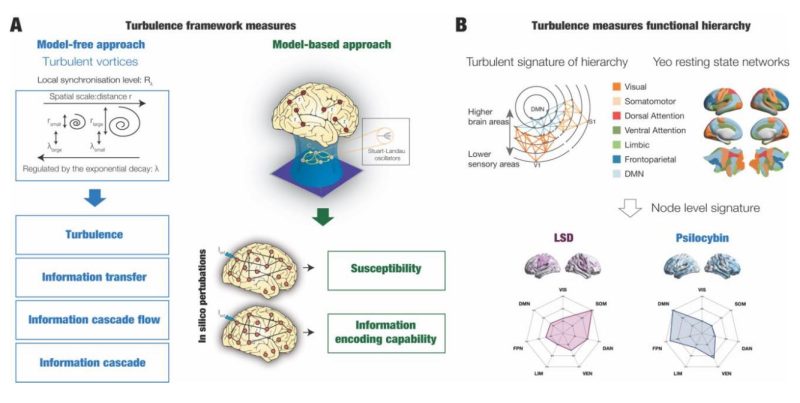15 de abril 2022
Abstract:
Psychedelic drugs show promise as safe and effective treatments for neuropsychiatric disorders, yet their mechanisms of action are not fully understood. A fundamental hypothesis is that psychedelics work by dose-dependently changing the functional hierarchy of brain dynamics, but it is unclear whether different psychedelics act similarly. Here, we investigated the changes in the brain’s functional hierarchy associated with two different psychedelics (LSD and psilocybin). Using a novel turbulence framework, we were able to determine the vorticity, i.e., the local level of synchronisation, which allowed us to extend the standard global time-based measure of metastability to become a local-based measure of both space and time. This framework produced detailed signatures of turbulence-based hierarchical change for each psychedelic drug, revealing consistent and discriminate effects on a higher-level network, i.e., the default mode network (DMN). Overall, our findings directly support a prior hypothesis that psychedelics modulate (i.e., ‘compress’) the functional hierarchy and provide a quantification of these changes for two different psychedelics. Implications for therapeutic applications of psychedelics are discussed.


